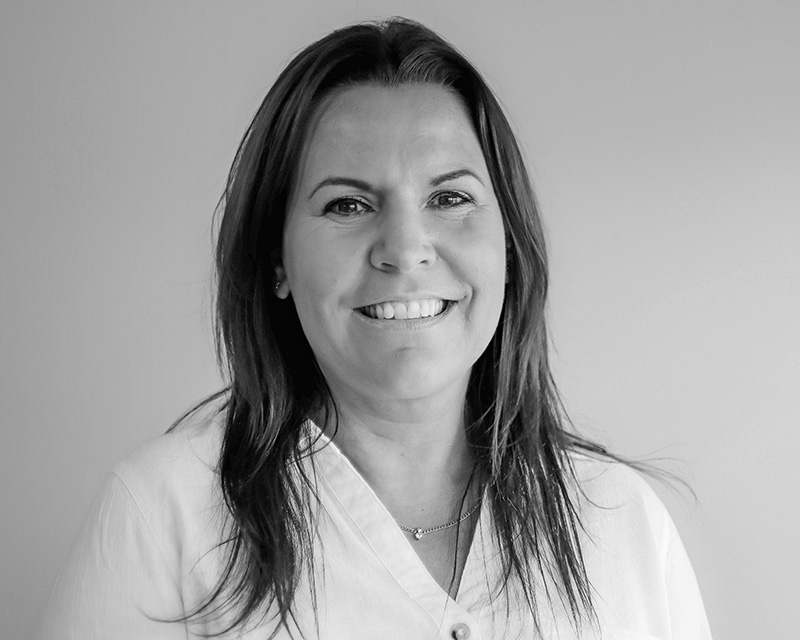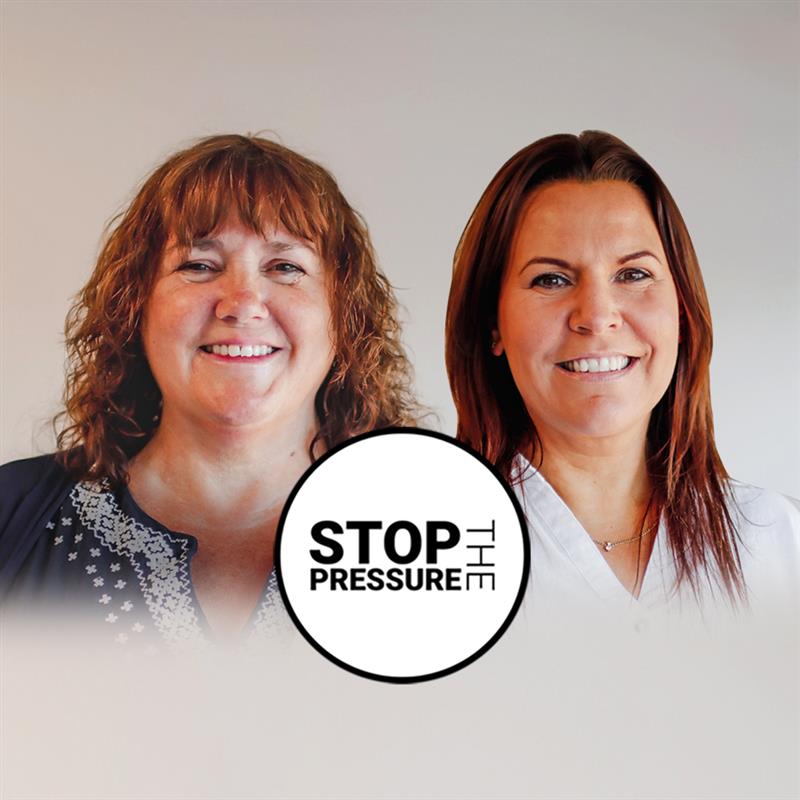What is a FloorBed?
"FloorBed" is the trademark name for a bed that uses Accora's signature and unique technology which allows a bed to go all the way to the floor but also raise to a safe nursing height for caregiving. Some similar terms for this type of bed might be Floor Bed, ultra-low bed, hi-lo bed or floor-level bed but there is nothing quite like the original FloorBed technology that has benefited so many service users in regaining or maintaining their independence and preventing injuries.
What are the benefits of a FloorBed?
FloorBeds have a lot of inbuilt features that benefit a great many groups of individuals with varied needs. Here are some of the most common reasons why FloorBeds are implemented.

Fall prevention
Falls don't just affect the elderly population, they also impact other user groups with specialist needs such as those with cognitive impairment, learning disabilities, or those who suffer from uncontrolled movements or reduced muscle control or strength which can make them a falls risk.
The low mattress platform height can benefit fall-risk service users, by significantly reducing their risk of injury should an unplanned bed exit occur. Why is this? It's simply a matter of physics. The shorter the distance that a person has to fall from the bed to the ground, the less the velocity and therefore the impact of the fall. Reducing the impact force of the fall reduces the injury risk to the bed user. More than just reducing the risk of injury, preventing falls can also positively impact a person's confidence, sense of wellbeing, and independence.
Falls can also be distressing for people, even if no injury is sustained. For that person, a fear of future falls can negatively affect their sleep and daily routines. Falls are also disruptive and distressing for family members and carers of the person who fell. Not to mention the drain on resources and increase of prescribed equipment required, for example, if a hoist is needed to assist the individual back into bed. The fear of future falls can reduce confidence which means they are then less likely to move about normally. This can affect their strength and this, in turn, increases their likelihood of falling again, becoming a self-fulfilling prophecy. Falling once can initiate a downward spiral for a person’s wellbeing, so prevention is ideal.
Bed rails are not always an appropriate intervention, especially if the service user is confused or cognitively impaired. In that case, the risk of injury, suffocation and entrapment would increase with the implementation of bed rails. So, the safest option and best practice is to use a FloorBed to prevent injury from falling out of bed. The FloorBed models 1 and 2 both have a low mattress platform height of 71 mm, approximately the diameter of a tennis ball, which proves extremely effective at preventing injuries from bed falls and the level-plane safety mat efficiently transforms falls into rolls. However, fall and injury prevention are not the only benefits of an Accora FloorBed.
Safer working height for care tasks
If preventing bed falls was the only consideration for a safe and functional bed, then a mattress placed on the floor might suffice, but it rarely is the only factor to take into account. People who could be at risk of falling from their beds typically require other forms of care either from family or carers. Whether this is in a community or facility setting, the safety of caregivers must be factored in.
For carers to perform personal care tasks safely, they will need the mattress platform to reach an appropriate height to avoid lower back strain and other associated joint or muscle damage. That's one of the reasons we created FloorBed 2. This model features an increased nursing height of 800 mm to keep taller carers safe while delivering medical or personal care. So FloorBeds don't just aid the user themselves, but also those who are involved in their care.

Transfer safety
Transfers must be thoroughly risk assessed. Transfer aids such as hoists or other sit-to-stand aids, are often used to safely move someone from one piece of assistive equipment to another such as from a bed to a chair. Even with the proper equipment, transfers can be dangerous, not only for the person being moved but also for the caregivers involved in assisting with the transfer, so a bed that assists with safe transfers is ideal.
Height-adjustable beds may be preferable for service users who struggle with independent mobility. This is because they can be adjusted to the appropriate height needed for the person to weight bear on the floor through their feet. Additionally, being able to adjust the height of the bed can assist in bringing any transfer aids into the optimal position to help that person in, or out of the bed safely.
For those who suffer from weakness or reduced control of the lower limbs, or have heavy, oedematous legs, getting into bed can be difficult due to the struggle of lifting their legs into the bed themselves. Some individuals find that sitting on the edge of the bed at a normal bed height and then lowering the bed to the lowest position helps them to slide their legs into the bed, requiring much less effort on their part. This helps them to maintain or improve their independence and reduces the need for carers since less manual handling may be required.
Similarly, those who are at risk of falling from the bed while sleeping may struggle to rise independently from a lying position close to the floor up to standing. A common solution to this is to raise the bed when the user wishes to exit it, so they can swing their legs off the bed assisted by gravity and then weight-bear through their feet.
Profiling functions for comfort and pressure care
Profiling beds are used in many settings for user comfort, posture and pressure management needs. For users who struggle with breathing or circulation, being in an upright, seated or semi-reclining position can benefit them. However, being in this position for long periods of time, especially if they are not able to reposition themselves, can cause pressure damage to occur, particularly over the sacrum. Our beds feature auto-regression technology which effectively reduces the pressure over the sacral area compared to standard nursing beds. It also reduces shear and friction which can affect skin integrity.
Accora's FloorBeds can be configured into the following positions:
- Backrest recline with auto-regression
- Kneebreak adjustment
- Trendelenburg
- Anti-Trendelenburg
These positions provide a wide variety of clinical, social and functional benefits for many users such as better positioning for feeding and interacting with others or aiding ease of breathing.
FloorBeds are also compatible with a variety of pressure care mattresses, including Accora's own Allevia range, which can aid in the management of pressure ulcers and help to prevent pressure damage.
Cost-effective and recyclable
So far, we've given you a whole lot of reasons why Occupational Therapists, carers and service users love FloorBeds but this one is a reason why community stores and nursing home budget-holders love them: FloorBeds are incredibly recyclable and adjustable. Community stores have a responsibility to use taxpayer pounds in the most efficient and cost-effective way while still addressing the clinical need. Similarly, nursing homes are under pressure to deliver exceptional care without breaking the budget. FloorBeds were made with this in mind.
FloorBeds not only aid in user safety which can reduce the cost of a service user's ongoing care package, but they are also very easy to fix and adjust. While our products are extremely durable, we also pride ourselves in the provision and quick distribution of parts, so you can replace a part, not a bed in the event of damage. Our FloorBeds also feature length-extension options for taller users, which give an extra 20 cm. Also, our original FloorBed and FloorBed 2 have a safe working load of 29 st and a maximum patient weight of 24 st, which makes it suitable for the majority of service users and residents. All of these elements combined, make FloorBeds highly cost-effective, adaptable and recyclable.
Paediatric-compatible FloorBeds
Accora also offers the JuniorKit which turns Accora FloorBeds into a junior user compatible, floor-level bed which meets the BS EN 50637 standard for children's beds. This accessory kit comprises of:
- Built-in and lockable pocket for storing the handset securely to prevent tampering
- Head and footboard bumpers reduce impact and minimise the risk of injury
- Safety sleeve helps reduce the risk of entrapment, as the platform mechanism is protected
- Possibility of further reducing the risk of entrapment if the FirmEdge mattress and Side Rails with integrated bolster are used.
Our JuniorBeds are suitable for service users that are 73 cm in height or more and provide a great solution for young people who have a risk of falls as well as those who would benefit from floor-level transfers.
Final thoughts
FloorBeds represent the gold standard in bed-fall prevention for a variety of user groups including the elderly and children, but they also have a range of other benefits to boast. The inbuilt no-shear backrest design helps with comfort and pressure management and the high nursing height (particularly in the case of FloorBed 2) helps to reduce caregiver strain and potential injuries. Additionally, the height adjustment options help users with lower limb weakness or disability to enter and exit the bed with ease and independence. They are also indefinitely recyclable and cost-effective to implement in community and nursing facility settings.
Want to know more about Accora FloorBeds? You can find out about our range of beds on our website.
FAQs
What is the difference between a low bed and a floor bed?
Low beds have been used in recent times to help mitigate the risk of injury that a bed fall could cause. While low beds do not necessarily prevent falls, reducing the height between the bed and the floor does reduce the velocity of the fall and therefore the impact, should a bed fall occur. Low beds typically have a low mattress platform level of around 241.3 mm from the floor.
Accora's FloorBed 1 and 2 have a low mattress platform of just 71 mm. If a person does fall from the FloorBed, the velocity of the fall will be reduced by around 40% due to the reduction in the distance between the bed and the floor. This therefore significantly reduces the risk of injury and the severity of any injuries sustained. Low beds might also be used in conjunction with bed rails for safety reasons, but these can exacerbate entrapment and fall risk, especially for Dementia patients who may try to climb over the rail.
What is the difference between a floor bed and an ultra-low bed?
FloorBeds rest at their lowest level of 71 mm from the floor (around the diameter of a tennis ball) which significantly reduces the risk of injury if a person experiences an unplanned exit from the bed. Simply put, the shorter the distance the person has to fall from the bed to the floor, the less velocity will act upon the person experiencing the fall, reducing the risk of serious injuries.
In contrast, an ultra-low bed reaches a low mattress platform of around 190.5 mm. While this is closer to the floor than a standard or low bed, there is still a significant distance to fall, which can result in injury and distress. If a person is at risk of falling from the bed, there is no substitution for a true FloorBed in mitigating that risk.


The industry's first floor-level nursing bed
At 71 mm, the FloorBed 1 can significantly reduce the risk of falls and associated injuries.














.jpg)




